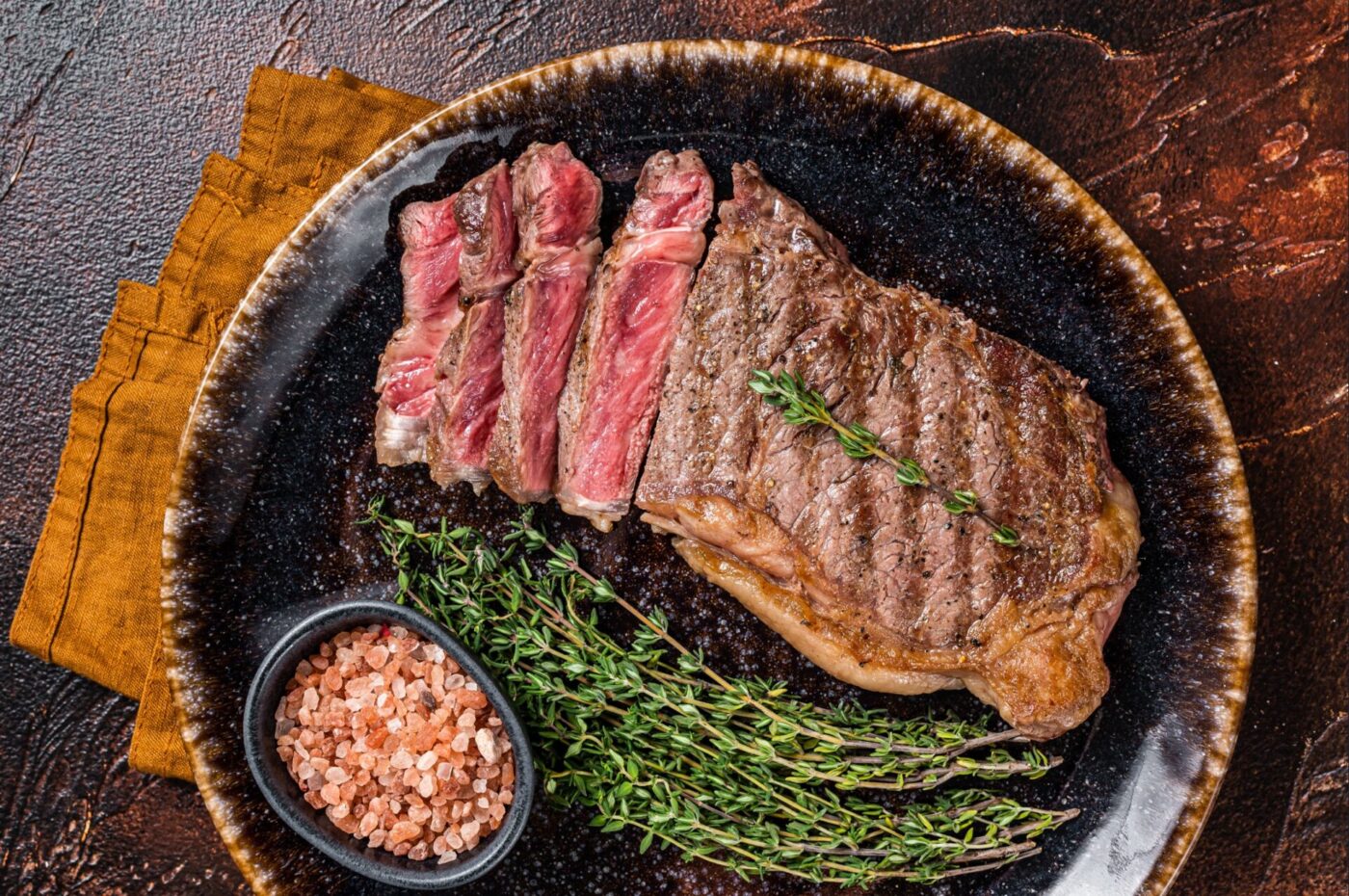Read More: Culinary History of Medium-Fat Beef Steaks
The Workhorses of the Butcher Shop: Early Days and Everyday Cuts
In the early days of beef consumption, before the industrialization of meat production and the rise of “prime” grading, medium-fat steaks were the norm rather than the exception. Cattle, primarily used for labor, didn’t develop the extensive marbling seen in today’s grain-fed animals. The cuts that we now categorize as medium-fat – think chuck steaks, certain parts of the sirloin, and some round cuts – were simply the standard fare.
These cuts, containing a moderate amount of intramuscular fat, offered a good compromise between flavor and leanness. They weren’t as tough as the heavily worked muscles of the animal, but they also didn’t require the intensive, slow cooking methods needed for the leanest cuts.
Key characteristics and cooking methods of these early medium-fat steaks included:
- Accessibility: These cuts were more readily available and affordable than the highly prized, heavily marbled sections. They were the “everyman’s steak,” feeding families and forming the backbone of everyday meals.
- Versatility: Medium-fat steaks lent themselves to a variety of cooking techniques. They could be grilled or pan-fried (though with attention to prevent overcooking), braised, stewed, or used in pot roasts. This versatility made them a staple in kitchens across different cultures and socioeconomic backgrounds.
- Flavor Profile: While not as intensely rich as highly marbled cuts, medium-fat steaks offered a good beefy flavor, enhanced by the moderate amount of intramuscular fat. This fat provided flavor and helped to keep the meat moist during cooking.
- Regional Variations: Different regions and cultures developed their own preferred cuts and cooking methods. For example, in some areas, certain chuck steaks were prized for their flavor and tenderness when braised, while in others, specific sirloin cuts were favored for grilling.
The Rise of Grading and the Shifting Landscape
The 20th century brought significant changes to the beef industry, and with it, a shift in the perception and categorization of steaks. The introduction of beef grading systems, like the USDA grading in the United States (Prime, Choice, Select), created a hierarchy based primarily on marbling.
This grading system had a profound impact on medium-fat steaks:
- The “Choice” Category: Many medium-fat steaks fell into the “Choice” category, positioned between the highly marbled “Prime” and the leaner “Select.” This categorization, while intended to provide consumers with information about quality, inadvertently created a perception that “Choice” was somehow “second best.”
- Marketing and Perception: The marketing efforts of the beef industry often focused on the “Prime” cuts, emphasizing their tenderness and flavor. This further reinforced the idea that higher marbling equated to higher quality, potentially overshadowing the merits of medium-fat options.
- Price Differentials: The grading system also established price differences, with “Prime” cuts commanding a premium. This made medium-fat steaks a more budget-friendly option, appealing to consumers seeking a balance between cost and quality.
- Changes in Breed. The favored breeds of cattle changed over time from breeds that did not marble well, to breeds that were famous for their marbling, such as Angus.
The Enduring Appeal: Medium-Fat Steaks in the Modern Era
Despite the emphasis on high-marbling and the rise of lean cuts, medium-fat steaks have maintained their relevance in the culinary world. Several factors contribute to their enduring appeal:
- Balance of Flavor and Value: They offer a good compromise between the rich flavor of high-fat steaks and the leanness (and often higher price) of very lean cuts. This makes them a popular choice for everyday meals and family gatherings.
- Versatility in Cooking: As in the past, medium-fat steaks continue to be versatile, lending themselves to a wide range of cooking methods. They can be grilled, pan-fried, broiled, braised, or used in stir-fries.
- Adaptability to Different Cuisines: Medium-fat steaks are found in cuisines around the world, adapted to local flavors and cooking techniques. From Argentinian asado to Korean bulgogi, these cuts find their place in diverse culinary traditions.
- Evolving Butchery Techniques: Butchers continue to develop new cuts and trimming techniques to maximize the tenderness and flavor of medium-fat steaks. This ongoing innovation ensures that these cuts remain appealing to consumers.
- Nose to Tail eating. The increase in popularity of using every cut of the cow brought a renewed appreciation for some of these overlooked cuts.
The Future of the Middle Ground
The culinary history of medium-fat beef steaks is a story of practicality, adaptability, and enduring appeal. These cuts, often representing the “everyday steak,” have played a vital role in feeding families and shaping culinary traditions around the world. While the focus on extreme ends of the fat spectrum (very lean or highly marbled) continues, the medium-fat steaks offer a balanced approach, providing a delicious and affordable option for a wide range of meals. As consumers continue to seek value, versatility, and a good balance of flavor and health, the “middle ground” represented by these steaks is likely to remain a cornerstone of the culinary landscape. The story of medium-fat steaks is a reminder that culinary excellence doesn’t always require extravagance; sometimes, the best flavors are found in the perfectly balanced middle.



Share
Click on the icons below to share "Title of the item to share"